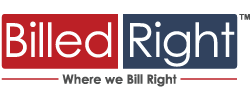Collaborating with Payers to Improve Revenue Resubmissions

Collaborating with Payers for Revenue Optimization
Importance of Efficient Claims Processing
Efficient claims processing is vital for optimizing revenue within medical practices. When claims are submitted accurately and processed without delays, healthcare providers can secure timely reimbursement. Delayed processing can lead to increased administrative costs and lost revenue opportunities.
Healthcare professionals must understand that the claims submission process is not merely a bureaucracy. It is a critical component of the revenue cycle management system. Efficient claims processing helps reduce the number of days in accounts receivable, positively impacting cash flow. Delayed or denied claims can significantly hinder revenue generation for a medical practice.
| Key Metrics | Impact on Revenue Cycle |
|---|---|
| Average Days in Accounts Receivable | Shorter duration improves cash flow |
| Claim Denial Rates | Lower rates reduce administrative costs |
| Timeliness of Resubmissions | Faster resubmissions improve revenue recovery |
Payers hold the ultimate authority regarding approval or denial of claims. Increased understanding of the claims process and minimizing errors can lead to fewer denials.
Strategies for Effective Resubmissions
When claims are denied or rejected, timely resubmissions become necessary for maintaining revenue flow. Healthcare providers should adopt strategies to streamline the resubmission process, ensuring accuracy and adherence to payer guidelines.
-
Thorough Documentation: Ensuring that all necessary documentation is complete and accurate before resubmission can significantly increase approval chances. Key documents might include patient records, treatment plans, and previous denial letters.
-
Reviewing Denial Reasons: Identifying and analyzing the reasons behind denied claims helps healthcare providers avoid similar errors in future submissions. Understanding common pitfalls can substantially reduce denial rates.
-
Utilizing Technology: Automated tools can enhance efficiency during the resubmission process by tracking claims and identifying errors. These tools can significantly diminish the manual workload, allowing staff to focus on strategic areas of the revenue cycle.
-
Adhering to Timelines: Timely resubmissions are crucial. Adhering to designated deadlines helps secure a reevaluation of claims before they become outdated.
-
Continuous Staff Training: Investing in staff training ensures that employees are well-versed in the nuances of claims processing. Training programs can enhance understanding of payer-specific rules and effective resubmission practices.
By implementing these strategies, healthcare providers can enhance their capabilities when working with payers on resubmissions. Improved collaboration ultimately leads to a healthier revenue cycle, ensuring that healthcare practices are financially sustainable and capable of providing quality care.
Building Strong Relationships with Payers
Successful revenue optimization heavily relies on strong relationships with payers. Understanding how to effectively engage with them enhances the claims process and minimizes denials.
Clear Communication Channels
Establishing clear and direct communication channels with payers is essential for a smooth claims process. Healthcare professionals should ensure that their staff is trained to communicate efficiently with payer representatives.
Regular communication can help address issues before they escalate. It is beneficial to create internal protocols for how to handle inquiries, follow-ups, and clarifications. This may include:
| Communication Method | Pros | Cons |
|---|---|---|
| Phone Calls | Immediate feedback, personal touch | Time-consuming, potential wait times |
| Emails | Documented conversations, flexibility | Delayed responses, potential miscommunication |
| Online Portals | Organized information, ease of access | Learning curve, limited capabilities |
By employing multiple communication methods, medical practices can enhance their responsiveness and maintain effective dialogue with payers.
Understanding Payer Guidelines and Policies
Each payer has distinct guidelines and policies that dictate how claims should be submitted and what documentation is needed. Healthcare professionals benefit from understanding these intricacies to avoid common pitfalls that lead to denials.
Training staff on the specifics of payer policies can significantly reduce errors. Key areas to focus on include:
| Policy Area | Description |
|---|---|
| Claim Submission Process | Steps required to submit claims accurately |
| Documentation Requirements | Specific documents needed for different procedures |
| Timelines and Deadlines | Critical timelines for resubmitting claims or appeals |
Fostering an environment where ongoing education regarding payer guidelines takes place ensures better compliance and improved outcomes.
Leveraging Technology for Streamlined Resubmission Processes
Incorporating technology into the revenue cycle management process helps alleviate many challenges associated with claims resubmissions. Automated tools can streamline workflows, track submissions, and maintain documentation.
The use of software solutions specifically designed for managing claims appeals provides several advantages:
| Technology Utility | Benefits |
|---|---|
| Automated Claims Tracking | Reduces manual errors, increases efficiency |
| Electronic Documentation Storage | Provides easy access and retrieval of necessary documents |
| Reporting and Analytics | Offers insights into trends in denials and approvals |
By leveraging these technological advancements, practices can enhance the accuracy of their submissions and maintain compliance with payer requirements.
Building robust relationships with payers requires commitment to clear communication, understanding policies, and efficiently utilizing technology. These strategies are vital in the pursuit of optimizing revenue through effective claims management and resubmissions.






